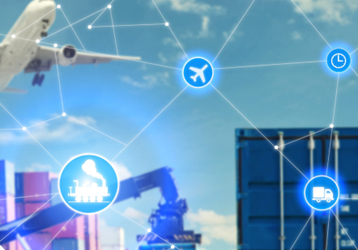4 Ways Software Testing Tool Enables IoT Transformation In The Airline Sector
By Ray Parker

The Airline industry is facing different challenges, related to smooth service delivery, software hiccups, and cybersecurity. A software testing tool guarantees the expected performance and overall process security within the system.
Keeping this scenario in mind, we are presenting four ways in which software testing tool enables IoT transformation in the airline sector.
1. Guaranteeing Security
Processes like purchasing goods at the airport with your smartphone, traveling via the security check-ins through only screening technologies, and checking a bag without showing an ID or a ticket. These activities are becoming a possibility, however, how safe is your information? Are these devices well tested and foolproof?
A software testing tool is required to make sure that IoT systems are well-protected and the information is not breached. Security is a significant element within your IoT strategy and it could not be missed. This breach can result in a big reputation loss for the airline industry.
2. Authenticating the Performance
The airport or the airline authorities are introducing different facilities to improve the customer experience. However, what can happen if there is non-performance and this experience is compromised? It will again result in complaints from the customers and reputation loss. This airlines industry is extremely competitive. Therefore, a dissatisfied customer can select another competing airline in case if he/she experiences a problem.
3. Establishing Connectivity
IoT is not able to function properly without creating the connecting nodes overall. Additionally, all these activities require to congregate on the devices held by the customers. This is the way in which the experience gets complete. According to Deloitte, more than 95% of passengers in the United States carry at least one phone. IoT experience is not complete without establishing the connection by the respective parties. In addition to this, it will assist airlines to understand the customer needs and gather feedback in an improved manner.
Other than this, self-service technologies were selected by 58% of the US passengers for check-ins and 14% would utilize a bag drop station. Think how uniting biometric sensing could streamline security and checking baggage.
Is your service, consumed successfully, received well and acceptable? These points are important for the service providers. Finally, this will assist to generate a constant return on the investment and revenue for the airline.
4. Delivery of The Service as Per the Expectations
In the end, passenger convivence is very important. For example, there could be a solution for waiting at the boarding gate and long ques. Rather than getting frustrated and crowding at the gates, the passenger can leave their seat after getting a message that ‘it’s time to board’. This would be the advantage that IoT can bring for the airline and the passenger. Nevertheless, what if there is a malfunction and the message is sent after the flight takes off? It is significant that these systems get tested for performance and on-time delivery, according to the plan.
Author Bio:
Ray Parker is an entrepreneur and internet marketer with over 9 years of experience in Search Engine Optimization, Creative Writer and Digital Marketing Consultant with Kualitatem.
